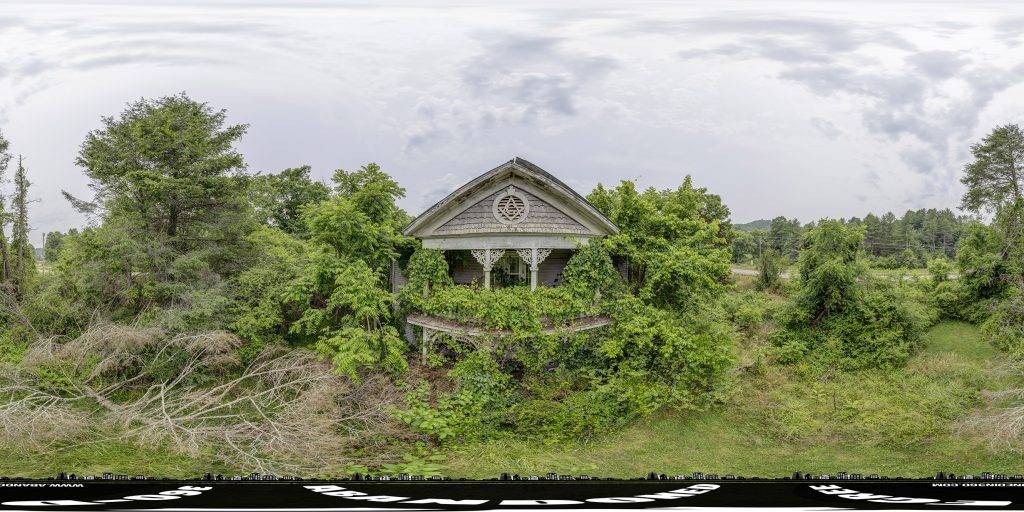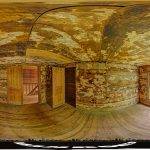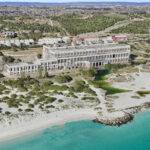Jeff White House
Experience a comprehensive, self-navigated exploration of the iconic Jeff White house in North Carolina through the captivating virtual tour provided below. This immersive experience allows for a detailed, 360-degree view of this historic site, inviting participants to delve into each panoramic image at their own pace. The beauty of this digital adventure lies in its accessibility, offering individuals from all corners of the globe the opportunity to engage in urban exploration without geographical constraints. Revel in the intricate details and rich history encapsulated within each frame, and embark on this virtual journey from any location in the world, connecting you to North Carolina’s heritage like never before.
Click here to view it in fullscreen.
About the Jeff White House
In the picturesque setting of North Carolina, amidst the rolling hills and history-laden landscapes, stands a structure that transcends time – the Jeff White House. This historical edifice, located near Marshall in Madison County, is not just an architectural marvel but also a silent witness to the evolving tapestry of the region’s history. From its intricate design to its enduring presence, the Jeff White House is a profound testament to North Carolina’s past. This article invites you on a journey through time, exploring the rich legacy and historical significance of this iconic North Carolina landmark.
Historical Background:
The Jeff White House, a precious gem in North Carolina’s historical crown, dates back to the late 19th century. This period was a transformative era for North Carolina, marked by significant social, economic, and cultural changes. The state was transitioning, with its landscapes echoing the stories of its people, their trials, and triumphs. It was during this time of profound change that the Jeff White House was established, its very foundations intertwined with the state’s unfolding history.
Architectural Splendor:
Reflecting the architectural zeitgeist of its time, the Jeff White House is a two-story, three-bay, “T”-shaped frame farmhouse. But it’s not just its shape that catches the eye. The house boasts a two-story gable-roof front porch, an architectural feature that lends it both character and grandeur. What’s more, the house’s applied wooden ornamentation and rich, lacelike details stand as a testament to the intricate craftsmanship and architectural trends of the late 19th century.
The house’s design and construction materials also speak volumes about the era’s local practices and available resources. The use of frame construction highlights the prevalence of timber as a primary material, pointing to the natural resources that were integral to local life and industry.
A Historical Landmark:
The significance of the Jeff White House extends beyond its architectural beauty. In 1975, this historical edifice was officially listed on the National Register of Historic Places, a move that underscored its importance in the region’s cultural and historical landscape. This recognition isn’t just about preserving a structure; it’s about acknowledging the house’s role in the broader tapestry of North Carolina’s history.
The House Today:
Today, the Jeff White House stands as a bridge between the past and present. While it continues to be a private property, its status as a historical landmark makes it a point of interest for historians, tourists, and anyone with an appreciation for architectural and historical treasures. It remains a poignant reminder of North Carolina’s rich past, an enduring structure that continues to witness the state’s ever-evolving story.
Conclusion:
The Jeff White House is more than a historical structure; it’s a chapter in North Carolina’s history book. It’s a story of architectural brilliance, historical shifts, and the timeless legacy of a region rich in cultural heritage. For those who tread through its grounds, the Jeff White House isn’t just a visual experience; it’s a journey through time, a tactile connection with the past, and a real-life link to the stories that have shaped North Carolina into what it is today.
Here are a few locations you might find interesting, the Ghost Town Village in North Carolina, the Jenkins Airfield Aircraft Graveyard in Delaware, Dynamite Bunkers in North Carolina, or the Eastern State Penitentiary in Pennsylvania.
Do you have 360-degree panoramic images captured in an abandoned location? Send your images to Abandonedin360@gmail.com. If you choose to go out and do some urban exploring in your town, here are some safety tips before you head out on your Urbex adventure.
Unlock the secrets of exploration by diving into precise GPS data available exclusively for an array of hidden gems and hundreds of other captivating sites, all within our members’ section. By investing in a Gold Membership, you’re not just gaining access; you’re securing a key to a vast, global archive of abandoned, untouched, and mysterious locations waiting to be discovered. Embark on your adventure with confidence, knowing every corner of the world can be within your reach. Don’t just observe—explore, discover, and claim the extraordinary journey that lies ahead with our treasure trove of world secrets. Subscribe now and transform the way you see the world!
Equipment used to capture the 360-degree panoramic images:
- Canon DSLR camera
- Canon 8-15mm fisheye
- Manfrotto tripod
- Custom rotating tripod head
If you want to start shooting 360-degree panoramic images, you might want to look onto one-click 360-degree action cameras.

A 360-degree panoramic image in front of the iconic Jeff White House in North Carolina.
Click on a state below and explore the top abandoned places for urban exploring in that state.






